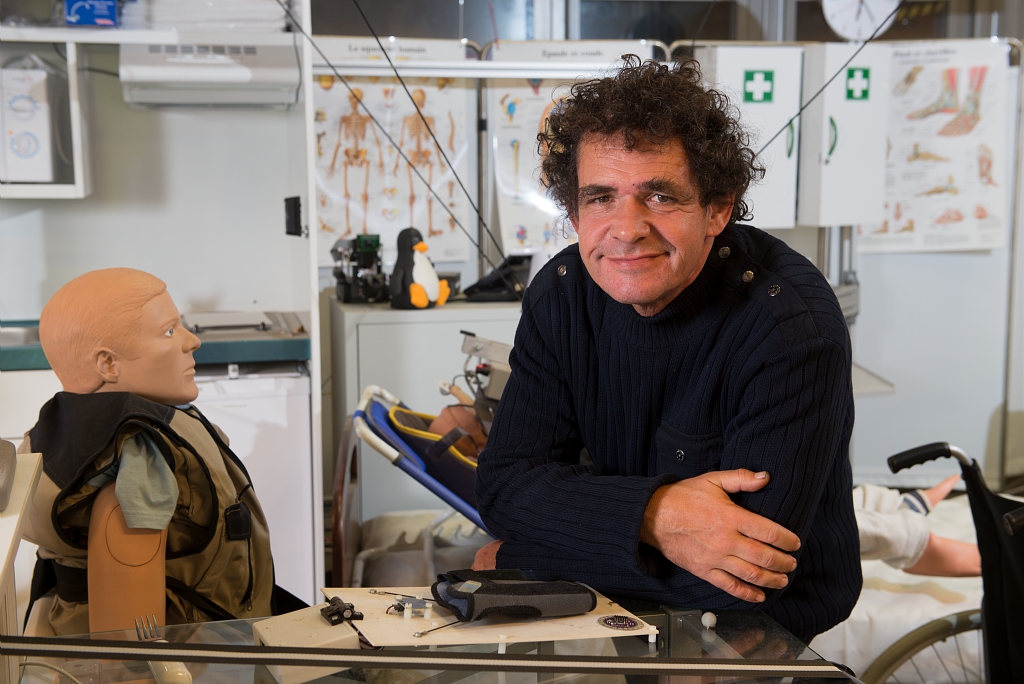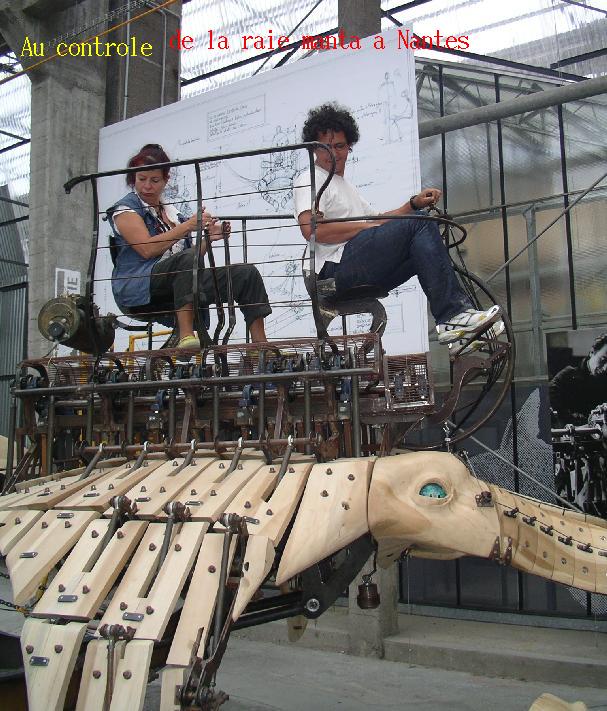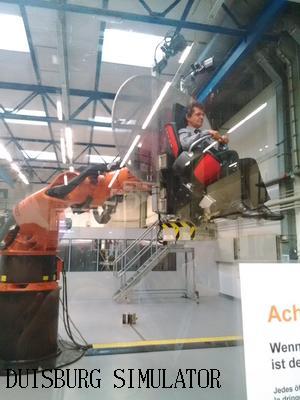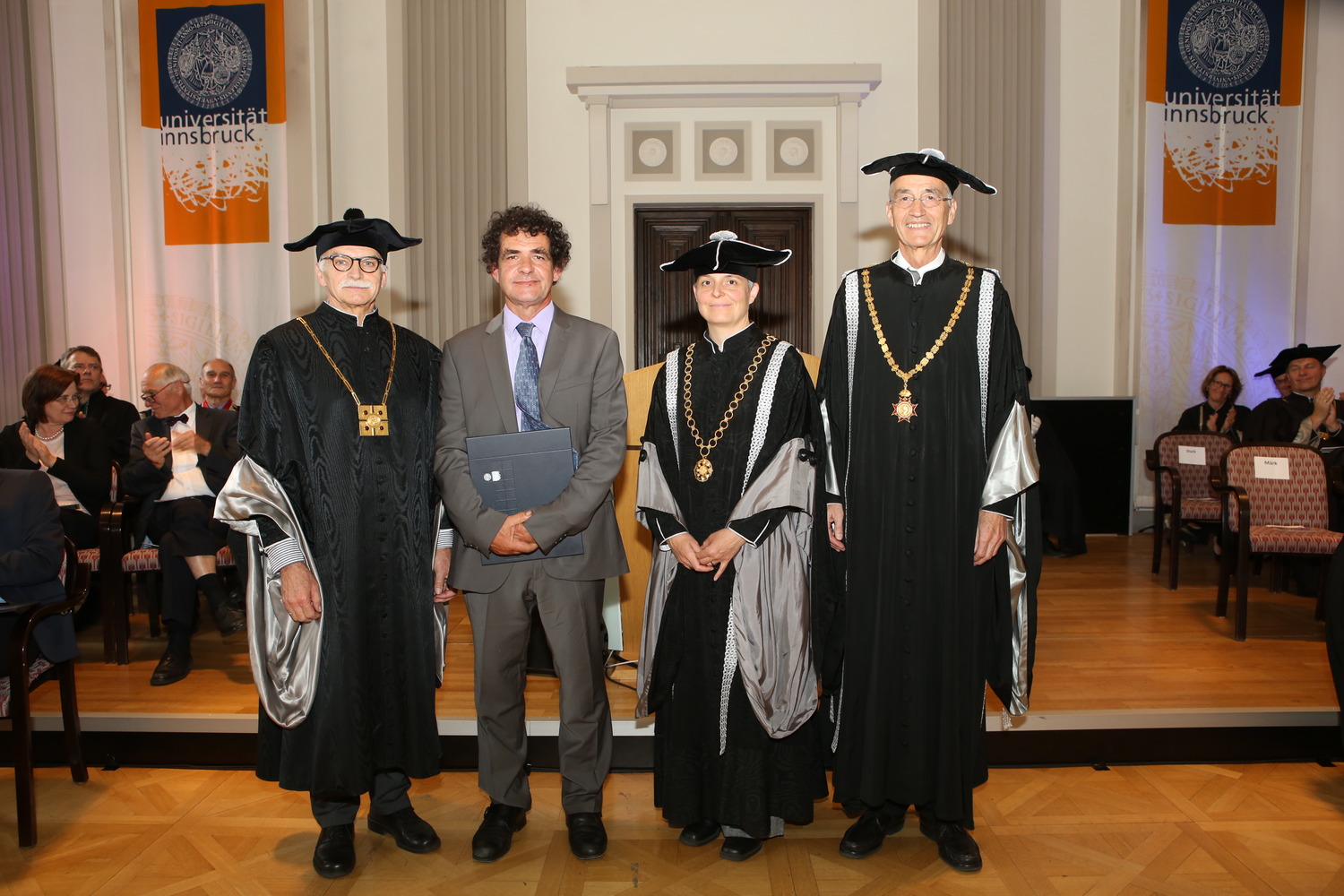Jean-Pierre MERLET




Senior scientist, emeritus
Previously head of the SAGA,
COPRIN projects and
HEPHAISTOS
References database on parallel robots
Address:
INRIA Sophia Antipolis, projet HEPHAISTOS
2004 Route des Lucioles, BP 93
06902 Sophia Antipolis Cedex, France
Tel: (33) 4 92 38 77 61
Fax: (33) 4 92 38 76 43
Email:Jean-Pierre.Merlet@sophia.inria.fr
IEEE Fellow, IFToMM Award of Merits,member of the Executive Council of
IFToMM (2012-2020), doctor honoris causae
University Innsbruck, a short resume
(to make it short, background: control theory (nowaday called
artificial intelligence), mechanical engineering,
mathematics and, on the side, computer science)
Research area:
My main reseach area in mechanism theory are:
studied with geometrical and numerical methods.
Most of the algorithms
I have developped in mechanism theory make an intensive use
of optimization and systems solving methods
developped in the project library
ALIAS based on interval arithmetics (see the
latex ALIAS-C++ manual
in pdf or
in
html ,
or
the
ALIAS-Maple documentation
in
html,
pdf
Some pedagogic example of the use of ALIAS are presented
here
and a complete list of examples
here.
The official ALIAS page is
here. Since 2021 I
have investigated the appropriate use of neural networks to solve
kinematic problems (appropriate meaning that we are looking for exact
solutions and not the very approximate one provided by AI).
I have also some transversal activities regarding:
the famous bibliometry indicators that are now very often used to
evaluate the scientific impact although they are very often not well mastered,
used and understood (see for example the
2007
analysis document (in French) and its english
version of
INRIA Evaluation Board on this subject). A small exercise: let FI=m/n
where n is a fixed integer and m a measure that is guaranteed to lie
in the range [k,7k] where k is known 1: determine the possible range
for FI 2: relate this calculation to journal impact factor presented
with 3 digits.
robotics prospective (see the
2006 prospective document established by INRIA project-teams on the subject)
Available softwares:
My bibliography
My bibliography
(with links, some are here, most recent
publications (since 2005/4) are now available
through Hal-Inria)
Integral
Research Reports (query in INRIA research report database)
Journals
EJCK (Electronic Journal of Computational Kinematics), 1999-2003 (editor in
chief)
IEEE Transactions on Robotics and
Automation (associate editor, 2002-2005)
Mechanism and Machine Theory (associate editor 2005-2012)
ASME Journal of Mechanisms and Robotics (associate editor 2008-2011)
Robotics bibliography
Robotics bibliography database (15 000 references)
Information on Parallel manipulators
Table of contents of the book "Parallel robots" published by
Kluwer in June 2000. A second edition published by Springer
is available since the end of 2005 (here is the
pdf file of the table of contents)
207 drawings of parallel robots
References on parallel manipulators,
Copyright J-P. Merlet/INRIA
Note 1: This is only an informative service. You can get directly references for which
a link GET IT is shown.
Note 2: this database is intended to be exhaustive.
Hence the presence
of a paper in the database does not provide
information on its quality
Note 3: You may submit a paper for inclusion
in the database provided that
you provide all the reference data
and a copy of the paper. Inclusion time is extremely
variable.
Note 4: this base does not include papers published in journal using
Articles Processing Charges (APC) because: 1) such a system is
extremely costly for the community while free
dissemination is now quite easy 2) the quality of these
papers are, in general, low.
The references database has a
search engine allowing to submit queries
on authors, title, year, address (for conferences) and keywords.
4893 references
Last update:08-28-25
full bibliography
(pdf file 924K)
Another version of the full bibliography: the references
are no more labelled with number (which will change after
an update) but with a perennial label that will not change
full bibliography with perennial index
References by author
Authors A-F
Authors G-I
Authors J-L
Authors M-N
Authors O-S
Authors T-Z
This small text explains the various References chapters that follow:
A parallel robot has a mechanical structure that is determined through the
structural synthesis,
an approach that relies on
design theory
and
mobility analysis.
See the chapters
Architectures, patent
and ... DOF Robot. You may also check if the considered structure
has not been aleready studied (use the above link to the robots drawings).
After having chosen the structure one has to move to the
design phase
and to optimisation
which allow one to determine the dimensioning of the robot, based on analysis
that relies on criterion such as
isotropy (which involves
the
inverse jacobian and
the jacobian),
workspace
(authors A-L,
authors M-Z)
(for which we need the kinematics modeling
(authors A-L,
authors M-Z)),
singularities
(authors A-L,
authors M-Z),
accuracy,
stiffness,
static,
velocity analysis,
dynamics
(authors A-L,
authors M-Z)
(may be with
vibrations analysis or
a
l'balancing analysis of
the robot), or, in other words, to perform a
performance analysis
We must also take into account the
hardware,
such as the
actuators and the
passive joints,
without neglecting the effect of
clearances and other
uncertainties.
For control
(authors A-L,
authors M-Z)
we will need the
Forward Kinematics
(authors A-L,
authors M-Z)
to study
trajectories and to plan
them (motion planning)
We may need also to perform a
calibration of the
robot. Numerical methods that cab be used to sove these problems are
diverse (geometry, algebraic geometry, continuation, interval
analysis) but has recently appeared the use of
neural networks that have still
to progress.
Some parallel robots are special due to their actuation mode
(binary robot or
wires-driven robots
(authors A-L)
(authors M-Z)
which require a specific analysis
or because of their
special mechanical architecture:
decoupled robot with
translation and orientation that can be independently controled,
flexible robot,
hybrid robot, mixing serial
and parallel architecture,
modular robot whose geometry
can be changed to adapt the robot to the task at hand,
redundant robot
with more actuators or sensors than necessary or
singular robot
that are always in a singular configuration.
The applications
(authors A-L,
authors M-Z)
of parallel robots are multiple:
force sensor,
crane
machine-tool,
medical,
micro-robot,
simulator,
articulated trusses,
joystick,
aerial,
maritime. We must also
consider the
fiability of the robot and its
energy comsuption. We may also
consider an appropriate use of AI
in some cases.
références par année/per year
1813
1897
1906
1908
1931
1942
1957
1962
1965
1967
1972
1973
1975
1976
1978
1979
1980
1981
1982
1983
1984
1985
1986
1987
1988
1989
1990
1991
1992
1993
1994
1995
1996
1997
1998
1999
2000
2001
2002
2003
2004
2005
2006
2007
2008
2009
2010
2011
2012
2013
2014
2015
2016
2017
2018
2019
2020
2021
2022
2023
2024
2025
Number of References per year
Journals statistics per year
Other sites on parallel robots
- Parallel Mechanisms
Information Center(courtesy I. Bonev)
Applications of Parallel manipulators
(Pictures)
(Gough platform Movie,188 Ko)
(Active wrist Movie,140 Ko)
more photos/vidéos on the site of the
HEPHAISTOS team
the WEB references of the book
"Parallel robots", 2005 edition
Others servers
- Parallel robots in the world:
LIRMM (Montpellier)||
CERT ONERA||
POSSO (Polynomial solving)||
ETH Zurich||
Laboratoire de robotique de l'Universite Laval||
McGill University ||
Northwestern University||
Platform 2000 (Spine group, Yale) ||
Endoscop (Berkeley) ||
Space System Lab
(Maryland Univ.) ||
Canterbury Univ. (New-Zeland) ||
National Institute of Standards and Technology (NIST)||
CONSTRUCT project ||
Joystick
(Iwata Lab, Tsukuba, Japon) ||
Joystick
(AEA, Karlsruhe,Germany) ||
Amsterdam Univ. (Holland) ||
Frasca Flight Simulator (Urbana, Illinois)
||
CAE Flight Simulator (Canada) ||
NASA
Simulation System Branch (Langley)
||
Ingersoll milling machine ||
||
Ultra-light plane application
||
Drilling machine (Arlington Robotics Research Institute) ||
||
Milling machine (ACROBAT project, Italy) ||
Other robotics projects at INRIA:
see ACENTAURI, ACTUS, CAMIN, CHORALE, CHROMA, DEFROST, FLOWERS, LARSEN, RAINBOW on
INRIA web site
Some other links (may be not up to date)
-
Conferences robotics,ai,control
- Robotics on
INTERNET (thanks to Sarah Wahlberg)
-
Robotics on
INTERNET (Univ. Indiana)
-
Students in robotics
- CNAM museum
- EEVL: reference site in Engineering
- For pipe smokers..
 HEPHAISTOS Home Page
HEPHAISTOS Home Page







